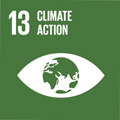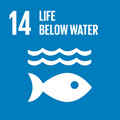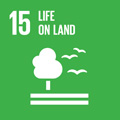- Docente: Gabriele Bitelli
- Credits: 9
- SSD: ICAR/06
- Language: Italian
- Moduli: Gabriele Bitelli (Modulo 1) Emanuele Mandanici (Modulo 2)
- Teaching Mode: In-person learning (entirely or partially) (Modulo 1); In-person learning (entirely or partially) (Modulo 2)
- Campus: Bologna
-
Corso:
Second cycle degree programme (LM) in
Environmental Engineering (cod. 8894)
Also valid for Second cycle degree programme (LM) in Civil Engineering (cod. 0930)
Second cycle degree programme (LM) in Building Engineering -Architecture (cod. 5697)
-
from Feb 17, 2025 to May 06, 2025
-
from May 12, 2025 to Jun 11, 2025
Learning outcomes
Aim of the course is to provide theoretical and practical knowledge
about Geographical Information Systems (GIS) in different
applications (environmental monitoring, networks and
infrastructures, urban systems, risk management) and the use of
satellite remote sensing imagery for derivingqualitative and
quantitive information about the territory (at urban, basin and
regional scale) and its change during the time. LiDAR surveys are
also discussed for the production of Digital Terrain Models.
At the end of the course, the student is able to use together GIS
software tools and Remote Sensing imagery for the analysis and
management of georeferenced databases in different applications of
Civil and Environmental Engineering.
Course contents
Short review of basic geodetic-cartographic issues.
LIDAR SYSTEMS (airborne and terrestrial 3D scanning) and related applications for the generation of
Digital Surface Models and Digital Terrain Models, data filtering
algorithms. Laser scanning devices and other 3D scanning instruments.
Main applications of LiDAR data for environmental and urban
studies (3D city models, 3D surveys of structures and infrastructures for documentation or BIM realization, etc.).
Digital images: characteristics and techniques for acquisition, CCD sensors, radiometric and geometric resolution, data formats.
UAV systems (drones): typologies and usage.
REMOTE SENSING / EARTH OBSERVATION: hystory and main concepts about the components of a system.
Energy, radiation and electromagnetic spectrum, the measured quantities, fundamental physical laws. Interaction with the atmosphere and the natural surfaces (vegetation, water, soil). Multispectrality and spectral signatures: examples.
Main satellite platforms and missions for optical remote sensing: Landsat, Sentinel, SPOT, ASTER, Ikonos, QuickBird, WorldView, etc. Hyperspectral data. Characteristics and availability of images, data distribution and cost.
Visualization and processing of digital satellite imagery. Colour systems. Analysis and image exploration by histograms and statistical parameters. Image enhancement and image restoration, digital filters. Pre-processing of the images, correction for atmospheric effects, sensor calibration. Operations with different bands, the example of Vegetation Indexes. Bands correlation. Principal Components Analysis.
The process of landcover classification and the production of a thematic map by remote sensing data. Supervised and unsupervised classification, hard and soft approaches. Object-based techniques. Assessment of a classification procedure.
Remote sensing applications in risk management and for the monitoring of territory and infrastrutures.
Introduction to microwave sensors, radar and SAR, differential interferometry.
GEOGRAPHICAL INFORMATION SYSTEMS (GIS) for the capture, storage, manipulation, analysis and display of geographic information: from the basic structural elements to the main applications in Civil and Environmental Engineering.
Main algorythms and methods for data manipulation in a GIS; procedures for spatial analysis in raster and vector environments for different kinds of applications: resource allocation, network management (transports, hydraulics), natural or anthropogenic risk phenomena, etc.).
Review of commercial and scientific GIS products, main functionalities and operations.
Use of satellite imagery and derived products in GIS applications.
All theoretical topics are accompanied by numerous practical exercises with open-source and commercial software provided to students for installation on their own computer.
A crowdmapping event based on satellite images will be realized, as part of international initiatives for humanitarian purposes.
Readings/Bibliography
- publications and scientific papers provided by the lecturer, online documents
Books LiDAR
- Vosselman G., Maas H.: Airborne and Terrestrial Laser Scanning, Whittles ed., 2010
- Wang C.: Introduction to LiDAR Remote Sensing, CRC Press, 2024
Books Remote Sensing
- Brivio P.A., Lechi G., Zilioli E.: Principi e metodi di telerilevamento. Citta' Studi Edizioni, 2006
- Dessena M.A., Melis M.T.: Telerilevamento applicato. Mako Edizioni, 2006
- Chuvieco E.: Fundamentals of Satellite Remote Sensing: An Environmental Approach, 2020
- Mather P., Koch M.: Computer Processing of Remotely-Sensed Images: An Introduction, 4th Edition. John Wiley & Sons, 2010
- Canty M.J.: Image Analysis, Classification and Change Detection in Remote Sensing: With Algorithms for Python (4th ed), CRC Press, 2019
Books GIS
- Migliaccio F., Carrion D.: Sistemi Informativi Territoriali: principi e applicazioni, 2nd ed. UTET, 2020
- Burrough P.A. & McDonnell R.A.: Principles of Geographical Information Systems, Oxford University Press,2015
Teaching methods
In addition to the theoretical lessons, a wide series of exercises is carried out with some of the most popular software for the processing of remote sensing images and the management of georeferenced data in a GIS environment. To this end, open-source and commercial programs will be provided to students for installation on their computers.
A crowdmapping event, based on satellite images, will be carried out as part of international initiatives for humanitarian purposes.
There will be interventions by external experts and an educational visit to an important SIT reality.
Assessment methods
The examination at the end of the course is oral
and aims to assess the achievement of the following learning
objectives:
- Knowledge of the basic notions about remote sensing and its
applications, including airborne Lidar systems;
- Knowledge of the basic notions about Geographic Information
Systems (GIS) and their applications in different fields.
Teaching tools
Lectures supported by exercises realized using different well known Remote Sensing and GIS software platforms (commercial and open source).
Use of multimedia data.
Visits to external centers.
Office hours
See the website of Gabriele Bitelli
See the website of Emanuele Mandanici
SDGs




This teaching activity contributes to the achievement of the Sustainable Development Goals of the UN 2030 Agenda.
